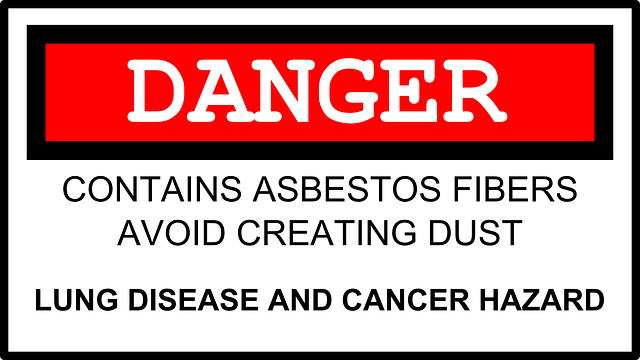If the constant stream of home improvement shows on television is any kind of indicator, there’s probably a pretty strong contingent of do-it-yourselfers out there with big plans to turn their house into the home of their dreams. Maybe it’s taking out a wall to add a little more space to the bedroom. Maybe it’s tearing up old rugs and replacing them with some shiny new hardwood. Most of the time we’ve already seen it done on TV and think, “I can do that!”

There’s nothing wrong with doing your own handiwork at home. Especially considering it can save you hundreds (maybe thousands) of dollars on labor and gives you a sense of pride seeing a project to completion. Of course, that isn’t to say there’s no risk in doing the work yourself.
There are a lot of things that can go wrong, and if you aren’t paying attention you could put yourself, or others, at risk. A prime example of that is accidental exposure to asbestos, a mineral used in thousands of products for home construction. Although asbestos has been heavily regulated for decades, older homes built before the mid-1970s are still at risk of containing the carcinogenic mineral.
Asbestos, for its part, is not considered dangerous when left alone and in good shape. The problems develop when those asbestos-containing materials, known as ACMs, are broken or damaged in some way. For example, during a natural disaster like a flood, those items may become compromised, causing them to weaken and decay. In the case of a home renovation, someone carelessly swinging a hammer in the basement could easily cause damage to materials like pipe insulation, cement or mastic.
The problem with asbestos is that you won’t even know you’ve been exposed until years later. The fibers are invisible and once inhaled, they can settle in the lungs and irritate the lung lining over time. If someone is exposed to those fibers for a long period of time, they face an increased risk of developing asbestos-related diseases like asbestosis or mesothelioma. Both are rare conditions but directly linked to asbestos exposure.
It’s difficult to determine if your home contains asbestos, largely because there were so many products used in the home construction process that contained the mineral. With that said, there are a few ways to determine if your home is more likely to house the mineral. If your home was built prior to 1980, there’s a good chance asbestos is lurking somewhere.
Until the mid-1970s, the product was used in everything from siding, floor and ceiling tiles, contaminated vermiculite insulation in attics and even cement and wraps used on pipes. Because of that, there are hundreds of thousands of homes across the U.S. where you need to watch out for asbestos.
It doesn’t matter whether you plan to perform a renovation or clean-up following a natural disaster. If you can’t rule out that asbestos was used during construction then it’s safe to assume it might contain the mineral. Then before you even begin taking the first step toward redoing your home, you should have the area you’re working in tested by a licensed, trained professional.
They’ll be able to determine whether the area contains asbestos and the next steps. Your Realtor should be able to help identify a great company to do the asbestos testing for your Louisville home.
What are my options?
There are three options when it comes to dealing with asbestos in the home; leave it alone, encapsulate it or abate it. Once again, ACMs in good condition with no signs of wear or damage are considered safe.
Encapsulation involves using a sealant that goes onto (and sometimes penetrates) products to hold asbestos fibers in place. Abatement involves removing the products entirely for disposal.
OSHA, the EPA, and many other agencies all agree that you should NEVER attempt to remove asbestos on your own. There is no safe level of exposure and if you’re inexperienced, the risk of potential contamination is high. Leave the removal to the professionals, because they know what they’re doing.
The cost to have asbestos removed from your home can be expensive, but it’s much better than taking the risk of accidentally breathing in asbestos fibers and dealing with potential health problems down the line.
As long as you keep in mind that asbestos is still a legitimate danger in many homes and take the right precautions to prevent unnecessary exposure, you’ll be crafting the house of your dreams in no time! Just keep in mind that there is no “true” way to identify ACMs (unless the product says it contains asbestos). It’s always best to get a professional’s opinion before starting the job.



